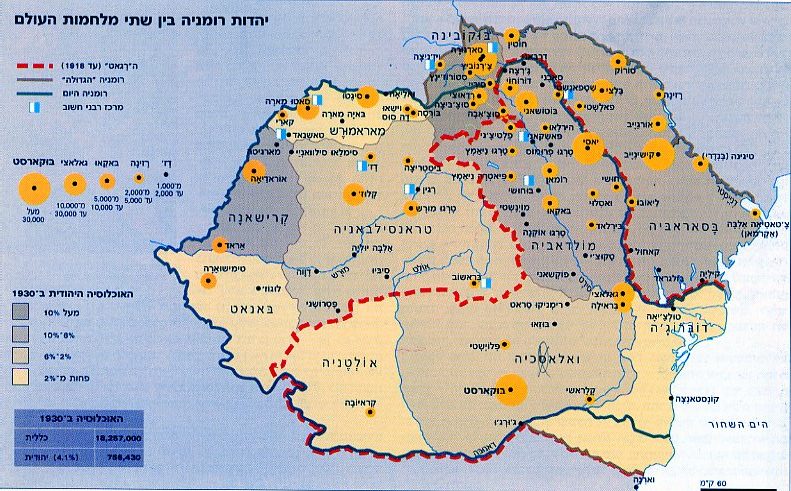
Jewish immigration to Romania from the mid-18th to the mid-19th century was due in part to the economic development within the principalities as well as to modernization. An increase in agricultural production led to a development of national and international trade, as well as to the growth of towns whose inhabitants depended on this trade, especially in Moldova, with its difficult mountainous geography.
In Wallachia, the number of cities was much smaller, and the flat area of this territory allowed for easier agricultural development. In the center were the larger cities, first of all the capital - Bucharest, which became the largest urban center in south-east Europe, after Istanbul. However, no new towns were established in Wallachia to attract the Jewish population.
The situation was different in Moldova, where the number of urban centers increased steadily, from 23 in 1774 to 72 in 1845. Some were located on the Carpathian Mountains, close to the transport routes between Moldova and Transylvania, and the more distant the town's location connecting West to East, the more it gained in importance. At the same time, internal trade was helping to develop the economy in Moldova. The towns that were established received authorization by the prince and were turned into urban areas open freely to Jews.
The new Jewish residents in Moldova played an important role in the development of these towns. They settled in new cities or contributed to the expansion of villages that later acquired a more urban character. In most cases the Jews lived and worked alongside other inhabitants, but there were also towns built or rebuilt exclusively by Jews. For example, Suceava, the former capital of Moldova, had lost its importance after the capital had moved to Iași in the early 17th century. In order to rebuild the city, Jews and Armenians were invited to settle there. A similar situation existed in the town of Tîrgu Frumos, an agricultural settlement in poor condition that had not had enough inhabitants.
The Jews in Romania concentrated in towns and cities, mainly because of the prohibition on settling in rural areas. The most explicit order in this context was given by Constantin of Mavrocordat in 1782: "We hereby decide that the Jews in the land may sit in the cities or towns as they settle... but among the villages in the countryside they have no permission to live or shop".
However, this prohibition was not fully respected, and the violations were in fact carried out with the cooperation of the landowners and princes. The Jews who settled in the rural areas operated mainly as "Cârciumari" or inn hosts, as well as other professionals. Documents from the end of the 18th and the beginning of the 19th century mention Jews, and in the census held in Moldova in 1821, 1009 Jewish families were registered in rural areas. Most of them, 206 families in the Suceava district, 155 families in Dorohoi, 108 in Botoșani, 93 in Roman, 71 in Iași, 70 in Hârlău, 66 in Văslui, 64 in Neamț, and 63 in Herța.
Moreover, the Jews who settled in cities and towns did not always arrive by means of official "invitations". Many came through border crossings under illegal circumstances by bribing government officials who turned a blind eye. They did it because the Jews were necessary and played an important role in the process of modernization.
At the beginning of the 18th century, Moldova experienced an accelerated rate of urbanization: a large number of towns and cities, such as Botoșani, Bacău, Galați and Roman, were developed and in all of these cities the Jewish population grew. During this period, the Jewish population of Iași, the capital of Moldova, grew as well, and in the first half of the 19th century it had the largest concentration of Jews.
A similar process occurred in Wallachia, but on a smaller scale. As for the Jewish population, apart from the old and wealthy Sephardic community in Wallachia, there was also a Jewish emigration from Moldova. Most of the immigrants came to the large economic center of Bucharest, which offered many opportunities for earning a living, attracting immigrants from many countries.